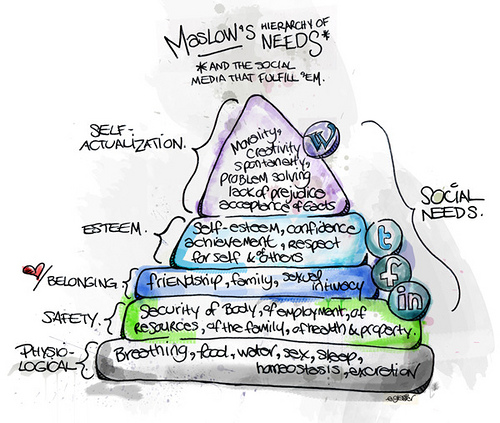[Part 1 of 4: Game theory & social media: Part 2, Part 3, Part 4]
Humans love games. We just love playing them.
The earliest proof we have, so far, dates back to 3600BCE: Six-faced dice with coloured pebbles made from heel bones of sheep and deer have been found on archaeological digs in Assyria, Sumeria, and Egypt.
Today, a walk around the British Museum, one of my favourite places, (which you can now do on Google), shows us that places where guards sat, probably for hours, like the entrance to the palace of King Ashurnasirpal II (883-859 BC) at Nimrud, has a board and a tally scratched into the side of one of the enormous winged human-headed lions.
By the time of the birth of Christ, many types of random number generators, including dice, were common, and were used for betting on or with board games. They were often spoken of as the workers of the blind goddess of fate, fortune, or destiny. And, it says in the Bible, that they cast lots to decide how to divide up Jesus’s possessions (Matthew 27:35). Even nowadays we talk about the roll of the dice when we talk chance and the things which happen to us.
By 10th century Europe, cards were the most popular thing with which to play games. There might be some skill, but really, a lot of it is up to chance, and don’t we all know that cliche about playing the hand you were dealt?
Highs and lows on the roll of a dice
The first formal attempt at analysing games, especially of chance, was written in 1520 (but published in 1663) by Girolamo Cardano and has been recognised as the first step in probability theory. Cardano was a compulsive gambler, so would have felt the highs and lows of the roll of the dice more than most. He was foremost in the minds of Pascal and Fermat who published a book in 1654, continuing his work. And, it was Fermat’s last theorem which remained a phenomenon until it was solved in 1994. Imagine, it took three hundred and fifty years to solve a puzzle.
Later, writer Fyodor Dostoyevsky described our love of excitement and chance when playing games and how our fortunes can flip in an instant. He wrote about it in letters to his sister and his short novel, The Gambler. He was convinced that you needed to detach and keep a clear head, but had difficulty doing either, for it is much easier said than done. Consequently, gambling and games are ubiquitous, from church bingo to nationwide lotteries. Life can really change with a roll of the dice – or so it seems.
Game theory not gamification
It was in 1928 that the first theory of game theory was first written about by John von Neumann, whom computer architecture is named after and is still used in most computers today.
But, it has to be said, game theory isn’t the same as gamification, at all. Please don’t mix them up. Gamification is about turning things into games such as business objectives and anything else we want to make more engaging and more fun. When gamification is well designed, it works really well. But game theory is much bigger, and much more than just games.
In 1944, von Neumann and Oscar Morgenstern translated and expanded von Neumann’s theories in order to produce: The theory of games and economic behaviour. For his 1928 paper was mainly about two people playing a game together with only one winner (known as: two person game-zero sum) but game theory is much bigger than this, and it is not just about games and game playing.
It might be based in mathematics, but game theory has people in it, of course, which is why it can be used to think about everything: economics, political science and psychology. And, it has the crazy assumption that people behave rationally, which if there is one thing I know about life, people never behave rationally, nor should you expect them to. The other thing is that, we can only partially model any prescription because the world is huge and constantly changing, and we can never model everything in a computer. It really doesn’t matter how clever computers get. We have a long way to go yet when modelling humans and behaviour, but game theory is a start.
That said, power is the name of the game: group voting, economic theory and how to influence people, especially in areas like interpersonal cooperation, competition, conflict, labour negotiations, and economic duopolies, can all be understood in terms of game theory.
Game theory for explaining social media
Social media is the big new tool of the Internet, for business, politics, etc, and as of yet, no one knows how it works. So, this series is going to take a look at some of the big hitters of game theory: the prisoners dilemma, the Nash equilibrium, and so on, to see if these strategies can help us understand better how social media works. Are people cooperating or conflicting in ways these models describe on social media? If yes, can we understand and anticipate behaviour? If not, what other theories could we come up with?
Let’s take a look.
[Part 2]







11 comments